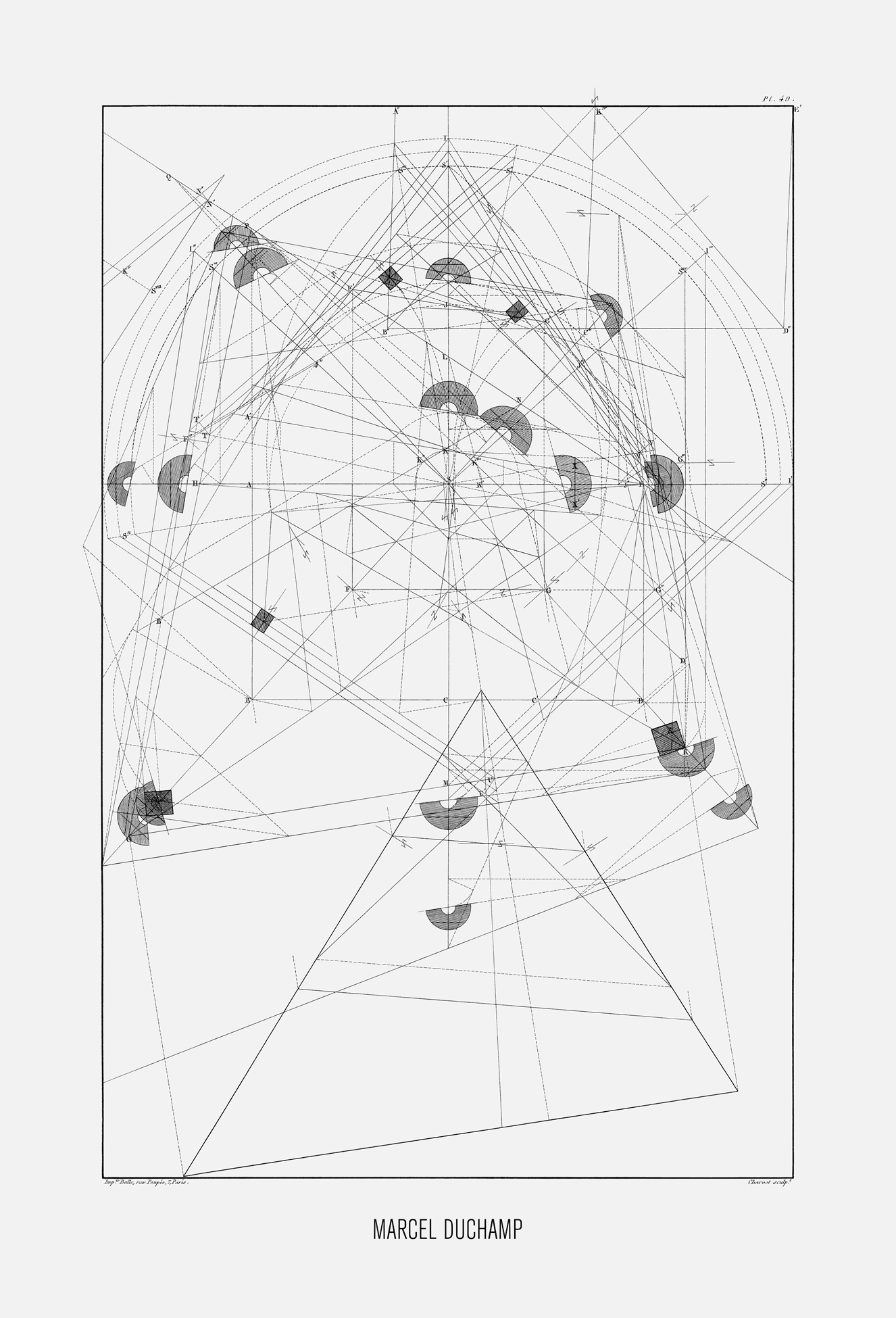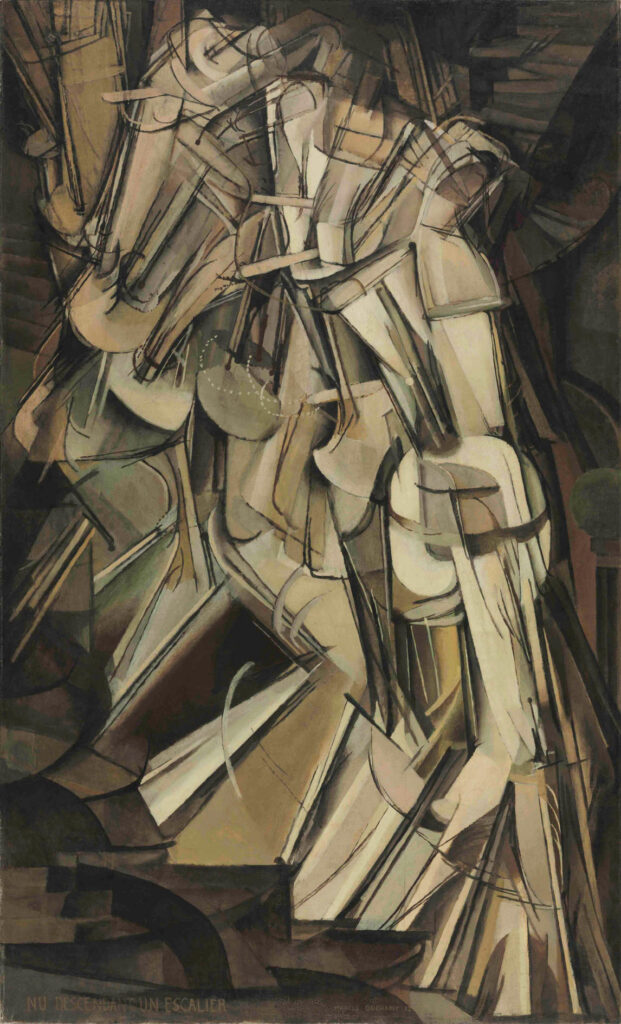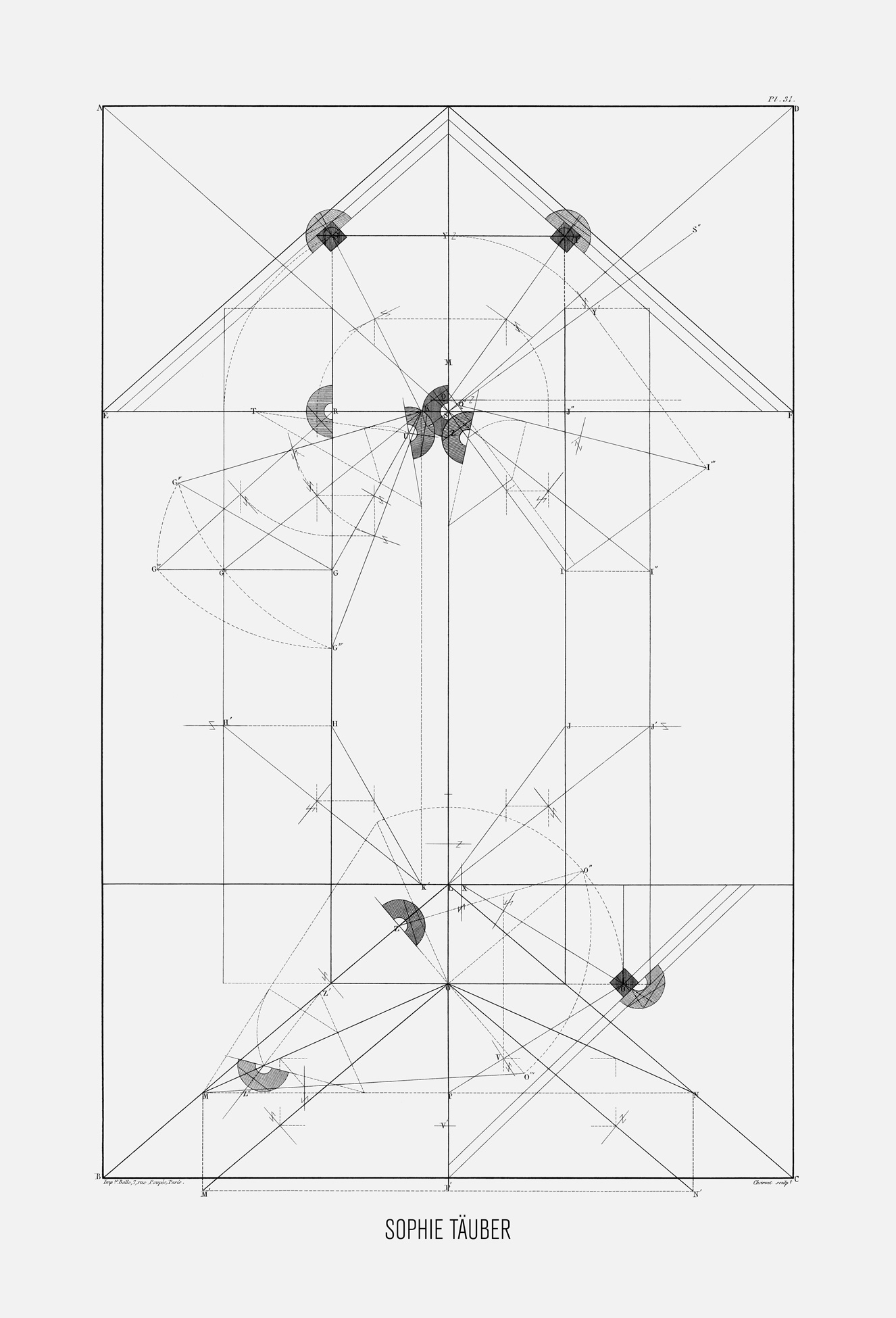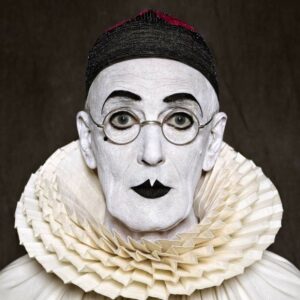The Dada Portraits: Marcel Duchamp 2010

Arnaud Maggs, The Dada Portraits: Marcel Duchamp, 2010
Archival pigment print, 103.5 x 72 cm
The Estate of Arnaud Maggs
The Dada Portraits is a series of black and white diagrams, each of which Arnaud Maggs labelled with the names of key artists from the Dada movement. As seen in The Dada Portraits: Marcel Duchamp, the names are set in a narrow sans serif typeface and centred beneath the drawing. The work comprises twenty oversized portraits, which are hung in a row. For these images, Maggs appropriated nineteenth-century French carpenters’ diagrams. His wife Spring Hurlbut (b.1952) first drew his attention to the material at a flea market in France. The Dada Portraits are an extension of the visual archive works that Maggs began in the 1990s, in which he makes use of found paper ephemera. They are also an extension of his photographic portraiture. This time, however, Maggs makes portraits through visual association.


“It is possible to interpret these complicated drafting plans as constructs: Cubist heads, Constructivist faces, and Dada experiments,” Maggs asserted. The network of overlapping lines and the semicircular shapes in the plate chosen for Marcel Duchamp, for example, reminded Maggs of the faceted motion in Nude Descending a Staircase (No. 2), 1912, by Marcel Duchamp (1887–1968). This series of portraits is a naming project in the readymade tradition of Duchamp. Maggs declares the drawings art by reproducing them and displaying them in a gallery. Moreover, capturing the often-nonsensical spirit of Dada, he assigned names to each, declaring the architectural drawings portraits through the act of labelling. Once Maggs began to see portraits in the drawings, he determined that the male artists were seen in profile and the females were frontal views—a structural remnant perhaps from his analytical photographic portraits.
The Dada Portraits continue Maggs’s dialogue with the art historical past. Though rooted in history, the work also marks a departure from some of his other ephemera-based projects. By ascribing a name to an unrelated diagram, Maggs makes his portraits mischievous inventions rather than documentation. “Taxonomies and systems of identification have previously been the foundations of my work,” Maggs wrote. “This new project is about altering a system, and imposing my own system in its place.”
Akin to the strategies of the Dadaists themselves, Maggs appropriated found material. He also relied on the relationship between text and image—in this case, his own text-based interventions—to reshape the meaning of his source images. In the early part of the twentieth century, typography often played a central role in artistic expression. Many artists, including the Dadaists and the Futurists, explored ideas through concrete poetry and typographic form. Maggs’s portraits, then, engage with the historical relationship between art and design.
Finally, the work is also a design project. Maggs commissioned Claire Dawson and Fidel Peña of Underline Studio to execute the typographic treatments for the titles/names of each work. His goals were twofold: he wanted a sans serif typeface that was reflective of the Dada period, and he wanted to ensure the lettering did not take over. Ultimately, the artists’ names were set in Akzidenz Grotesk Light Condensed. Originally introduced in 1898 and later expanded in the 1960s, Akzidenz Grotesk was a mainstay in modern graphic design beginning in the 1920s. It offered the neutrality that Dawson and Peña were after for The Dada Portraits. “Akzidenz Grotesk Light Condensed felt like a nice combination of being from the period,” Peña explains, “but also contemporary and inconspicuous enough to not overpower his work.”

 About the Author
About the Author
 More Online Art Books
More Online Art Books
 Acknowledgements
Acknowledgements